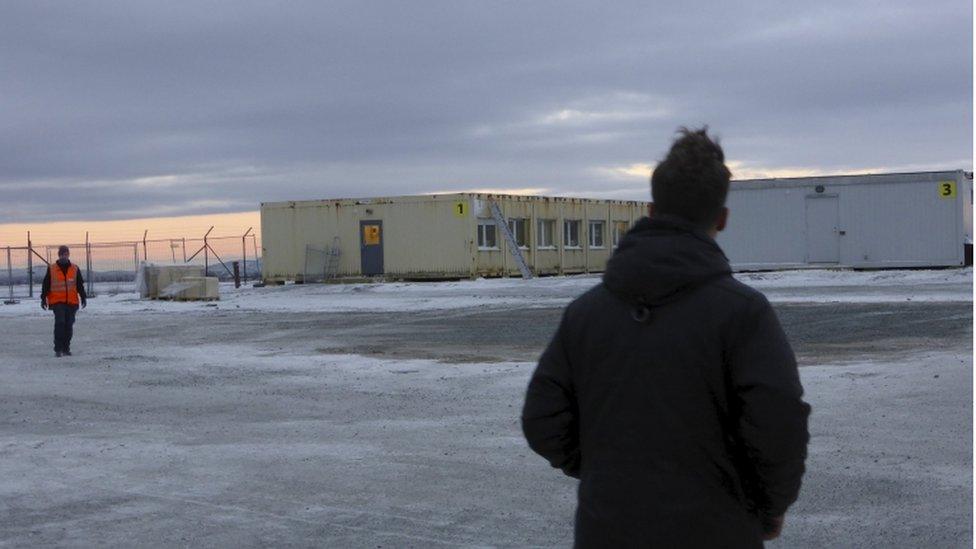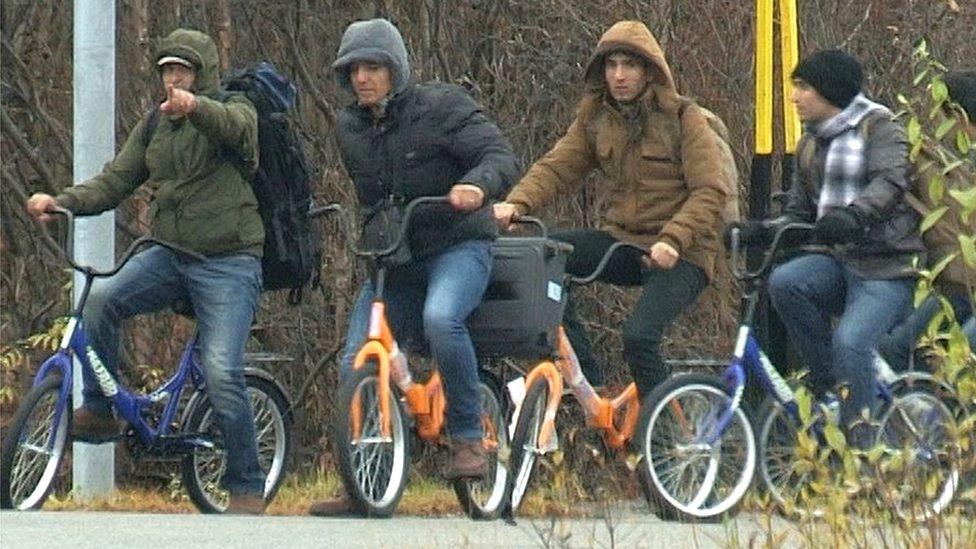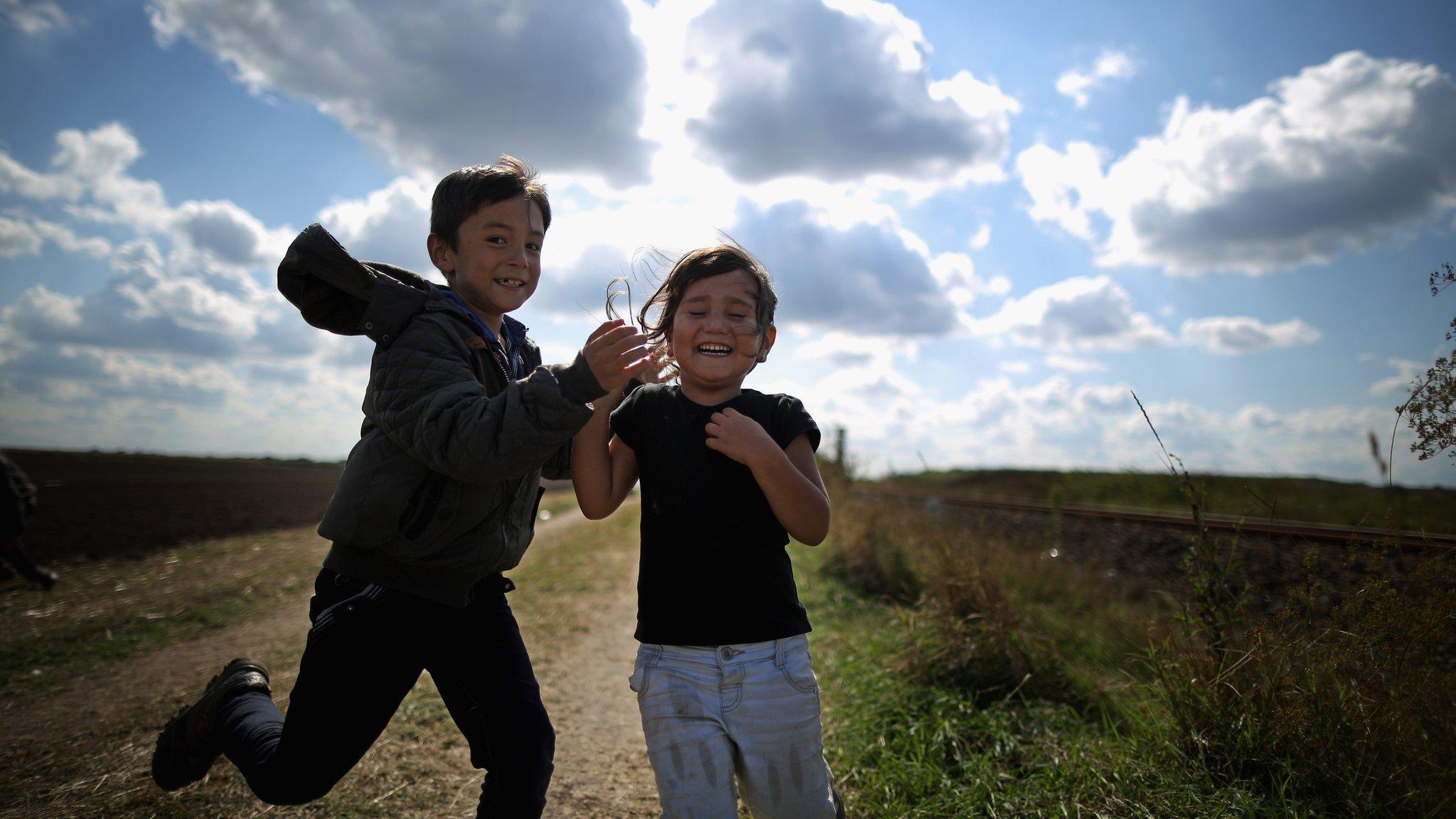Migrant crisis: Norway begins deportations to Russia
- Published

Thousands of people used bicycles to cross the Arctic border between Russia and Norway
Norway has sent 13 migrants back to Russia under new rules expected to see thousands deported by bus, reports say.
About 5,500 people are due to be transported from Norway to Russia. Many crossed the Arctic border by bicycle as part of the influx of migrants to Europe in 2015.
Norway announced in November it would immediately deport people who had arrived from a country deemed safe.
The first bus left a refugee shelter in the town of Kirkenes earlier.
Norway previously planned to send the migrants back to Russia by bicycle due to rules that banned vehicles from transporting people across the border without the necessary documents. People were also prohibited from crossing on foot.
Thousands of migrants used bicycles to cross the border last year after discovering a loophole in the law.
Most of them had fled the conflict in Syria.

A reception centre was hastily built in Kirkenes to accommodate arrivals in 2015
The move to deport the migrants has been condemned by human rights groups. The daytime temperature at the border is about -30C.
It comes after Russia agreed that Norway could return migrants with a Russian visa by bus rather than bicycle.
A coach with 13 people on board drove to the airport in the Russian port city of Murmansk on Tuesday night, according to Norwegian public TV.
Tor Espen Haga, a spokesman for the Norwegian police immigration service, told the broadcaster NRK (in Norwegian),, external that all those transported had either a valid Russian visa or other residence permit.
He said deportations would continue, and "what happens next is up to the Russians".

Over the weekend, about 70 people were brought from other asylum centres in Norway to the reception centre in Kirkenes, about 8km (5 miles) from the Russian border, according to reports.
About 40 people have fled a centre in Vadso for fear of being returned to Russia, Norwegian media quoted the head of the centre as saying.
There were also reports that a group of migrants in Kirkenes had started a hunger strike to protest against the planned deportation.
As Tim Whewell reports, the number of people crossing the border can be measured by the number of abandoned bikes
Norway's police authorities say 5,500 people arrived from Russia via the border crossing in Kirkenes in the second half of 2015.
All of them had visas or other permits allowing them temporary or long term stay in Russia and will therefore be returned, reports the BBC Russian Service's Oleg Boldyrev.
Human rights groups have condemned the move in a letter to the UN's refugee agency, our correspondent adds. They say Russia should not be considered a safe place for refugees.
Increasing numbers of migrants began crossing Russia's border with Norway by bicycle last year, in an attempt to avoid the perilous journey across the Mediterranean to Europe.
Although Norway is not a member of the EU, it is part of the Schengen Agreement which is designed to provide border-free travel.

A note on terminology: The BBC uses the term migrant to refer to all people on the move who have yet to complete the legal process of claiming asylum. This group includes people fleeing war-torn countries such as Syria, who are likely to be granted refugee status, as well as people who are seeking jobs and better lives, who governments are likely to rule are economic migrants.
- Published23 October 2015

- Published4 March 2016
